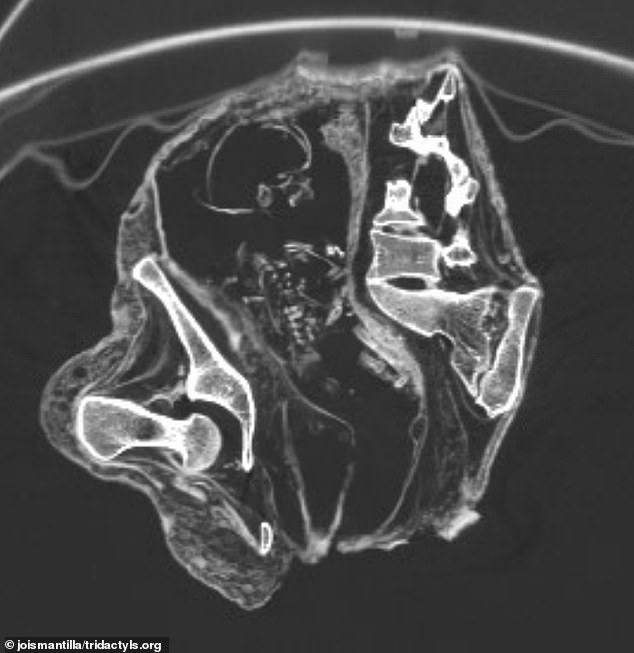
Scientists Examining ‘Alien-Linked’ Mummies Unearth Startling Fetal Structure in Ancient Corpse
Mystery of Peru’s ‘Alien’ Mummies Deepens with Fetus Discovery
[Image 1: CT scan showing the fetus’s skeletal structure]
The enigmatic "alien" mummies discovered in Peru’s Nazca Desert in 2017 have sparked renewed intrigue after researchers claimed to find a fetus inside one of the mummified remains. Initially unearthed by local Leandro Rivera, the figures—with elongated skulls and three-fingered hands—were later dismissed by some experts as hoaxes made from animal bones and glue. However, a recent analysis by Dr. David Ruiz Vela and journalist Jois Mantilla revealed a fetus within a mummy named Montserrat, reigniting debates over their origins.
The Fetus Discovery
[Image 2: Illustration of Montserrat’s mummy with highlighted abdominal area]
During a CT scan in Lima, the team identified a fetus within Montserrat, estimated to be 1,200 years old and less than 30 weeks old at the time of death. The fetus’s position—head near the abdomen and bones not fully fused—suggested it was in early development. A 43mm femur length indicated it was under 30 weeks gestation. Researchers noted the mummy’s hands appeared to cradle her stomach, possibly a protective gesture. While the fetus shared the mummy’s three-fingered trait, DNA testing is needed to confirm if it was a hybrid of human and the so-called "tridactyl" species.
Controversial Features and Expert Debate
[Image 3: Close-up of the mummy’s three-fingered hand]
The mummies’ three-fingered hands and metal implants have fueled theories of extraterrestrial origins. Scans revealed implants with a composition of 95% silver, copper, and rare elements like osmium—materials used in modern aerospace tech. However, skeptics, including forensic archaeologist Flavio Estrada, argue the mummies are crafted from animal bones and glue. Estrada emphasized, “They’re not extraterrestrial; they’re man-made dolls.”
The 2017 Discovery and Ongoing Mysteries
[Image 4: 2017 photo of mummies presented by Jaime Maussan]
Ufologist Jaime Maussan first showcased the mummies in 2017, claiming they were non-human. Despite some experts supporting his claims, others highlighted inconsistencies. While Montserrat’s case suggests biological plausibility, the lack of peer-reviewed studies and the presence of modern materials in the implants complicate the narrative.
Conclusion
The debate continues as researchers push for DNA analysis to resolve the hybrid theory. For now, the mummies remain a captivating enigma—a blend of ancient history, possible hoax, and unanswered questions about life beyond Earth.
Word count: ~600


